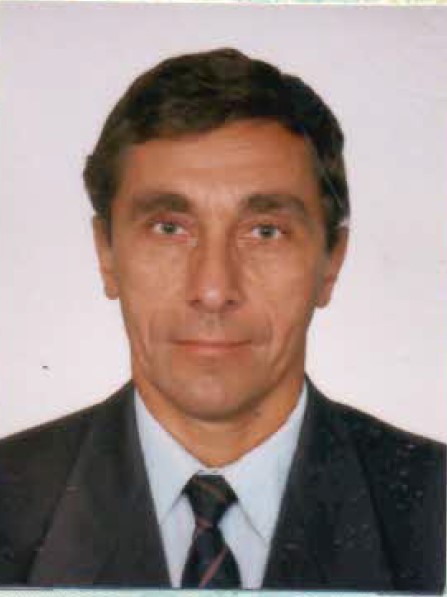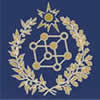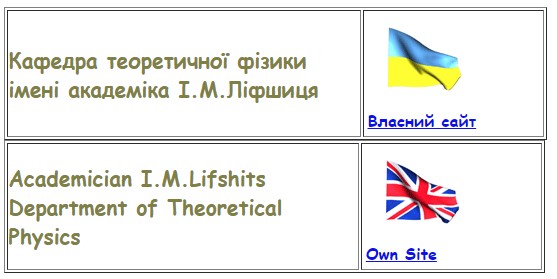|
Born on June 30, 1959 in Kharkiv. In 1975, he entered the Faculty of General and Applied Physics of the Moscow State Technical University, and in 1978 he graduated from the Department of Theoretical Physics, Faculty of Physics, Kharkiv National University.
In 1996, he defended his candidate's thesis on the specialty 05.11.13 (Devices and methods for controlling the quality and properties of substances, industrial products and the environment). From 1981 to 2015, he worked as a researcher, teacher and associate professor of the Department of Physics and the Department of Radioelectronic Devices and Nanotechnology at the Kharkiv National University of Radioelectronics (KHNURE). In 2000, he received the scientific title of associate professor of the Department of Physics.
Since 2015, he has been working as a senior researcher at the Department of Statistical Radiophysics at the Institute of Radiophysics and Electronics named after O.Ya. Usykov National Academy of Sciences of Ukraine. Since 2023, he has been working part-time as an associate professor of the Department of Theoretical Physics named after Academician I.M. Lifshitsa
Melnyk S.I. has more than 160 scientific and educational works. During his scientific activity, S.I. Melnyk performed the duties of a responsible executor in a number of state and international scientific and technical projects. In 2010, he became a laureate of the international "Majorana Prize" for his work on modeling economic phenomena and objects using classical physics.
His research interests: information-measurement method of modeling in physics, economics and theory of consciousness, methods of tomography (thermal, microwave, ground-penetrating radar, etc.), solving incorrect inverse problems by methods of complexity theory, fundamental problems of classical and quantum physics.
Advanced courses (BS): information-measurement method of modeling physical and economic systems, methods for solving problems in physics of increased complexity.
Main publications:
1. Melnyk, Sergiy & Tuluzov, Igor. (2021). Consciousness and Matter. Information-measuring Approach. Generalized Principle of Complementarity. 10.13140/RG.2.2.36606.72006/1.
2. Tuluzov I, Melnyk S. Algebra of fundamental measurements as a basis of dynamics of economic systems, arXiv:1209.1831
3. Melnyk S.I., Tuluzov I.G. Fundamental Measurements in Economics and in the Theory of Consciousness /arXiv:1110.5283v1
4. Tuluzov I.G., Melnyk S.I. Fundamental Measurements in Economics and in the Theory of Consciousness (Manifestation of quantum-mechanical properties of economic objects in slit measurements) / arXiv:1110.5288v1Р.
5. Melnyk, Sergiy & Drobnaya, Olga & Karpenko, Valentina. (2020). Features of Using Synthetic Aperture and Reverse Convolution Algorithms in Georadar Sounding. 388-391. 10.1109/UkrMW49653.2020.9252791.
6. Melnyk, Sergiy & Melnyk, Stanislava & Lavrinovich, A. & Cherpak, M.. (2019). To the Phenomenological theory of Avalanche-Like Effect in Dc-Biased Microwave Nonlinear HTS Transmission Line. Ukrainian Journal of Physics. 64. 962. 10.15407/ujpe64.10.962.
7. Tuluzov, Igor & Melnyk, Sergiy. (2019). Relativistic Theory of Value. 10.13140/RG.2.2.26160.92163. DOI:10.13140/RG.2.2.26160.92163
8. Melnyk, Sergiy & Tuluzov, Igor. (2017). The possibility of constructing a relativistic space of information states based on the theory of complexity and analogies with physical space-time *. https://arxiv.org/abs/1703.08069.
9. I.G. Tuluzov, S.I.Melnyk (2016) Solution of problems of dynamics in the information space of states on the basis of the principle of complexity minimization/ Ukrainian Metrological Journal, No.3(2016): Reports of the X ISTC "Metrology-2016", 15-18/ DOI: 10.24027/2306-7039.3.2016.86226
10. S. I. Melnyk, S. S. Melnyk, Reconstruction of imageswith large non-uniform discrete // Radiophysics and electronics. - 2016. - Vol. 7(21), No. 1. - P. 77-84
11. Melnyk, Sergiy & Tuluzov, I. & Melnyk, A.. (2015). Planimetry of Economic States. International Journal of Productivity Management and Assessment Technologies. 3. 16-24. 10.4018/IJPMAT.2015070102.
12. Melnyk S. and Tuluzov I. Modeling in economics and in the theory of consciousness on the basis of generalized measurements. NeuroQuantology 2014; 12 (2): 297-312
13. Tuluzov I. and Melnyk S. Manifestation of Quantum Mechanical Properties of a Proprietor’s Consciousness in Slit Measurements of Economic Systems. NeuroQuantology 2014; 12 (3): 398-411
14. S. I. Melnyk, S. S. Melnyk and I. G. Tuluzov. Method of projection dynamic thermal tomography (PDTT) //QIRT-2012-308
15. Melnyk, Sergiy & Slipchenko, N.I.. (2011). Dynamics of weak continuous quantum measurement were based on information approach. Microwave and Telecommunication Technology (CriMiCo), 2011 21th International Crimean Conference. 777-778.
16. Tuluzov I. and Melnyk S. Methodology for Economic Systems Modeling. EJTP 2010; 24 (7): 57-79
17. Melnyk, Sergiy & Gordienko, J.. (2010). Method of microwave scanning tomography of electrical properties of semiconductors. 10.1109/CRMICO.2010.5632574.
18. Melnyk, Sergiy. (2010). Uncertainty and accuracy of measurements as parameters of optimal description their results. Information processing systems ISSN: 1681-7710. 85. 56-62.
19. Melnyk, Sergiy & Tuluzov, I. (2010). The dynamics of stock exchange based on the formalism of weak continuous quantum measurement. Journal of Physics: Conference Series. 238. 012035. 10.1088/1742-6596/238/1/012035.
20. Melnyk, Sergiy. (2009). The theoretic information approach to the analysis of the measuring data and an estimation of their uncertainty. Information processing systems ISSN 1681-7710. 79. 43-46.
21. Melnyk SI, Tuluzov IG. Quantum Analog of the Black-Scholes Formula (market of financial derivatives as a continuous weak measurement). EJTP 2008; 18 (5): 95–104.
22. Shnyrkov, V.I. & Soroka, A. & Melnyk, Sergiy. (2008). The two Josephson junction flux qubit with large tunneling amplitude. Low Temperature Physics. 34. 610. 10.1063/1.2967504.
23. Shnyrkov, V.I. Melnyk, S.I. (2007). Quantum detector based on superposition of macroscopic states in phase qubit. Low Temperature Physics. 33. 22-31. 10.1063/1.2409630. |
|



